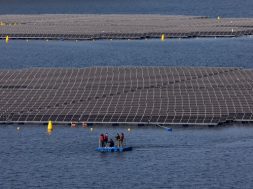
Currently renewable energy like solar and wind has very little penetration in our north-eastern states – even though there is a huge potential to meet a majority of the region’s energy demand from solar, wind and small hydropower. Manipur is, in fact, the only state in the region that has a solar policy,” said Chandra Bhushan, deputy director general, Centre for Science and Environment (CSE), while opening a conference here today on ‘100 per cent renewable energy future for the northeast’.
CSE organised the one-and-half day conference to promote renewable energy in the region for energy access. Of India’s 1.3 billion people, almost 240 million do not have access to electricity. The International Energy Agency has further projected that India will have 147 million people without electricity in 2030.
At present, renewable energy in the northeast refers only to small hydro power (less than 25 mega-Watts) – even though the region sits on potential reserves of almost 60,000 MW. To add to this, the north-eastern states have one of the lowest per capita electricity consumption rates in the country: there are still roughly 4.85 million households – more than 50 per cent in the region – that do not have access to electricity.
In fact, the per capita electricity consumption in the region is as low as some of the least developed nations. The situation is compounded by the fact that the current government schemes to provide electricity are primarily based on grid expansion. This model has so far not been able to provide electricity to the poor in the country, and may yet fail to do so. It is in this context that CSE’s latest report Mini-grids: Electricity for all assumes significance.
The report was released and discussed at the event. The report presents a model centered on generation-based incentive and subsidy for setting up distribution infrastructure to ensure every household receives one unit of electricity every day. It is important to understand that the national grid and mini-grids would be complementary to each other.
Bhushan says, “The model presents a strategy to provide universal access of electricity using renewable energy based decentralised distributed generation/ mini-grids. It will enable the north-eastern states to leapfrog to a new clean energy future. This will also ensure democratisation of power generation.” The conference also presented CSE’s rooftop solar calculator. The calculator is an Excel-based model that evaluates the viability of solar power as an option for an individual’s electricity demand. It is designed for domestic consumers for all states of the country.
The calculator assesses the power demand in any home and provides information on the solar system that could cater to this demand along with information on reduction in electricity bills and the time it will take to recover the money invested. The conference was attended by most of the key players in the renewable energy sector, specifically from the northeast, including representatives from industry, nodal agencies such as the Solar Energy Corporation of India, the Ministry of New and Renewable Energy and their regional agencies as well as non-governmental organisations.















